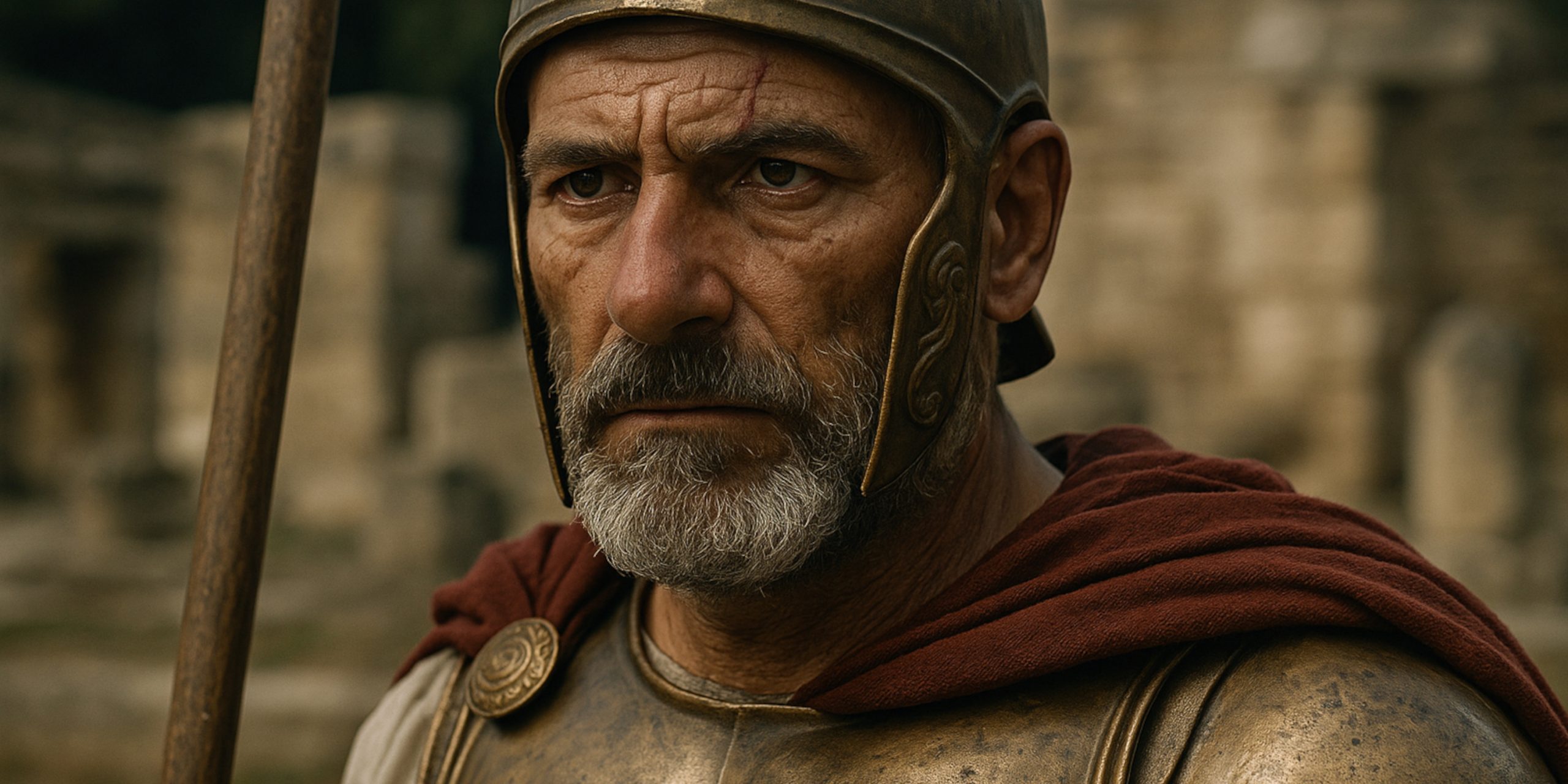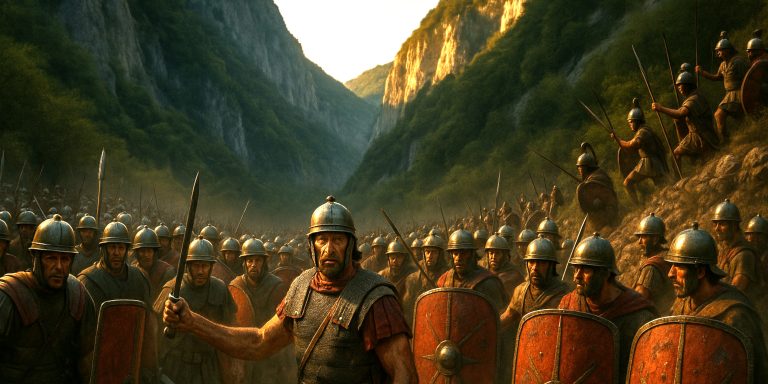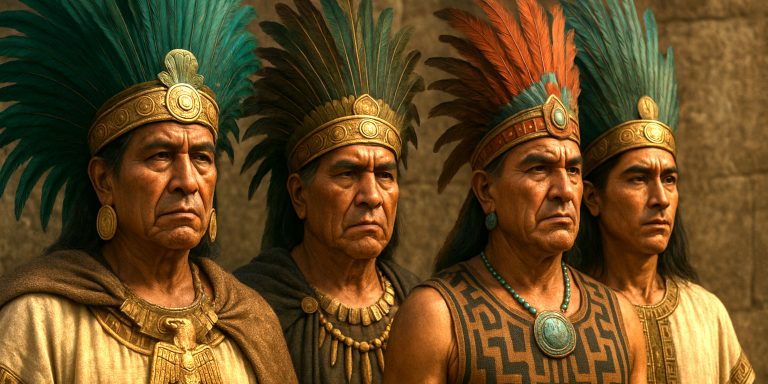
Philip II (r. 359 to 336 BC) rescued a fragile Macedon, built a professional army, reshaped Greek warfare, and secured hegemony over Greece after Chaeronea. His reign set the stage for Alexander’s conquests and left a political and military template copied across the Hellenistic world.
Quick facts
- Born 382 BC, assassinated at Aigai in 336 BC.
- Unified Macedon, became archon of Thessaly, and dominated mainland Greece through war and diplomacy.
- Famous wounds: loss of the right eye at Methone and a serious leg injury later in life.
Arms and armour
The Macedonian panoply
Philip professionalised and re-equipped his forces. The phalangites fought in a dense formation armed with the sarissa, a very long pike often described as roughly 4 to 6.7 metres, supported by a smaller, flatter shield slung from the neck so both hands could manage the pike. Their sidearm was typically the xiphos. Elite Hypaspists guarded the phalanx flanks, while the Companion cavalry delivered decisive charges.
Companions rode in wedge formations and used the xyston, a long thrusting lance, then closed with kopis or xiphos if the lance broke.
Royal armour and grave goods
The richest physical evidence comes from the Royal Tombs at Aigai (Vergina). Finds include an iron muscle cuirass with gold fittings, a pair of greaves, weapons, and a gold diadem. A golden larnax bearing the 16-rayed star contained cremated remains. The larnax is recorded at 7,820 grams of gold. Greaves of unequal length have often been linked to Philip’s leg injury.
Battles and military acumen
Reforms and doctrine
Philip’s combined-arms approach synchronised a deep, pike-armed phalanx with mobile flank guards and a shock-cavalry hammer. The system rested on relentless drilling, promotion for merit, and careful logistics.
Key campaigns
- Crocus Field, 353 or 352 BC. Philip crushed the Phocian general Onomarchus, took control of Thessaly, and gained its revenues and cavalry.
- Olynthus, 348 BC. After a shifting alliance, Philip besieged and razed the city, dismantling the Chalcidian League and projecting power onto the Chalcidice.
- Perinthus and Byzantion, 340 to 339 BC. Ambitious sieges that failed under combined Greek and Persian support for the defenders. Even in failure they reveal the scale of Philip’s siege train.
- Chaeronea, 338 BC. Philip and the teenage Alexander broke a coalition led by Athens and Thebes. Ancient and modern writers note a controlled withdrawal on Philip’s wing that opened gaps for cavalry to strike. The victory secured Macedonian leadership of Greece.
Wounds and resilience
Philip lost his right eye at Methone and later suffered a bad leg wound, yet he continued to command in person. These injuries align with ancient testimony and are frequently cited in modern studies.
Governance and diplomacy
Military success was paired with deft politics. Philip balanced powerful nobles, extended royal authority, used marriage to cement alliances, and built a Greek coalition under Macedonian leadership after 338. The result was a stable base for the planned invasion of Persia.
Assassination and succession
Philip was assassinated during celebrations at Aigai in 336 BC. Alexander succeeded immediately and inherited the reformed army and the League of Corinth, along with a prepared Persian campaign plan.
Where to see artefacts from his reign
- Museum of the Royal Tombs at Aigai, Vergina. Underground museum around the royal tombs, with the golden larnax, diadem, weaponry, armour, ivories, and the Persephone fresco.
- Polycentric Museum of Aigai, Vergina. New central museum opened in December 2022 that contextualises Aigai with substantial digital interpretation and sculpture displays.
- Archaeological Museum of Thessaloniki. The Gold of Macedon galleries house the Derveni Krater and the Derveni Papyrus, key fourth-century objects from the wider Macedonian elite milieu.
- Archaeological Museum of Pella. Strong coverage of the royal capital’s houses, mosaics, and court life, which frames Philip’s administrative and cultural world.
Latest archaeology and ongoing debates
Two linked questions remain active: which tombs at Aigai belong to which royals, and how to read the bioarchaeology.
- Tomb I, the “Persephone” tomb. A 2025 study in the Journal of Archaeological Science dated the burials and argued Tomb I cannot belong to Philip II, challenging earlier claims. News summaries from Archaeology magazine and others covered the finding. Debate continues, but the study narrows likely identities to other Argead royals.
- Tomb II. Many scholars still identify Tomb II as Philip II based on the larnax, the armour group, and the famous mismatched greaves, while others have argued for Philip III Arrhidaeus. Earlier work supported a Philip II identification, while a 2015 PNAS paper controversially proposed Philip II was in Tomb I. The balance of recent discussion keeps Tomb II as the frontrunner for Philip II, with caveats.
- Site and display updates. The Polycentric Museum of Aigai opened in 2022 and continues to expand interpretation. In 2025, Greek media reported digital restoration work on Vergina tomb paintings, reflecting a wider push to re-image fragile frescoes using non-invasive methods.
Why Philip mattered
Philip turned a regional kingdom into the dominant Greek power by marrying reform to ruthless campaigning. He fostered a professional military culture and a political order that survived his death long enough for Alexander to carry Macedonian arms to the edges of the known world.
Further reading pathways
For a clear narrative and balanced judgements on policy, manpower, and statecraft, start with standard biographies and Encyclopaedia Britannica’s entries on Philip II, Chaeronea, and the rise of Macedon. Pair that with museum catalogues from Aigai and Thessaloniki for the material record.
Watch the documentary:



